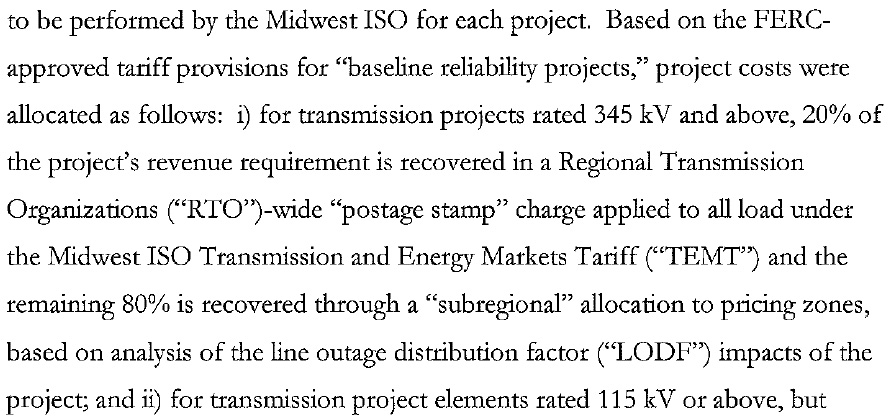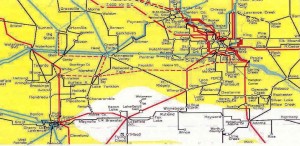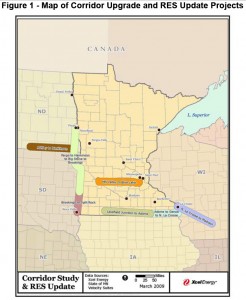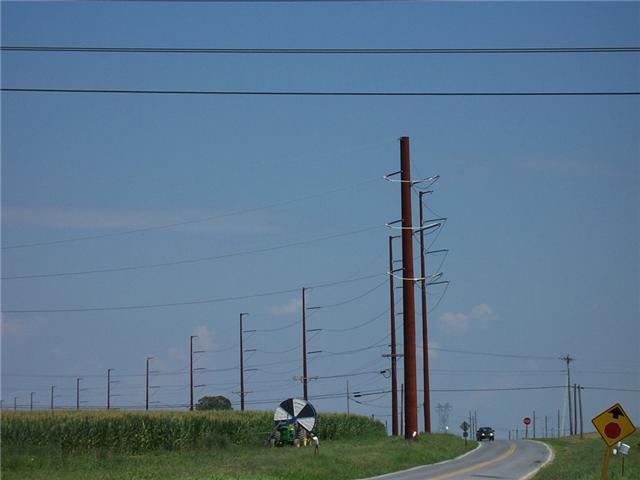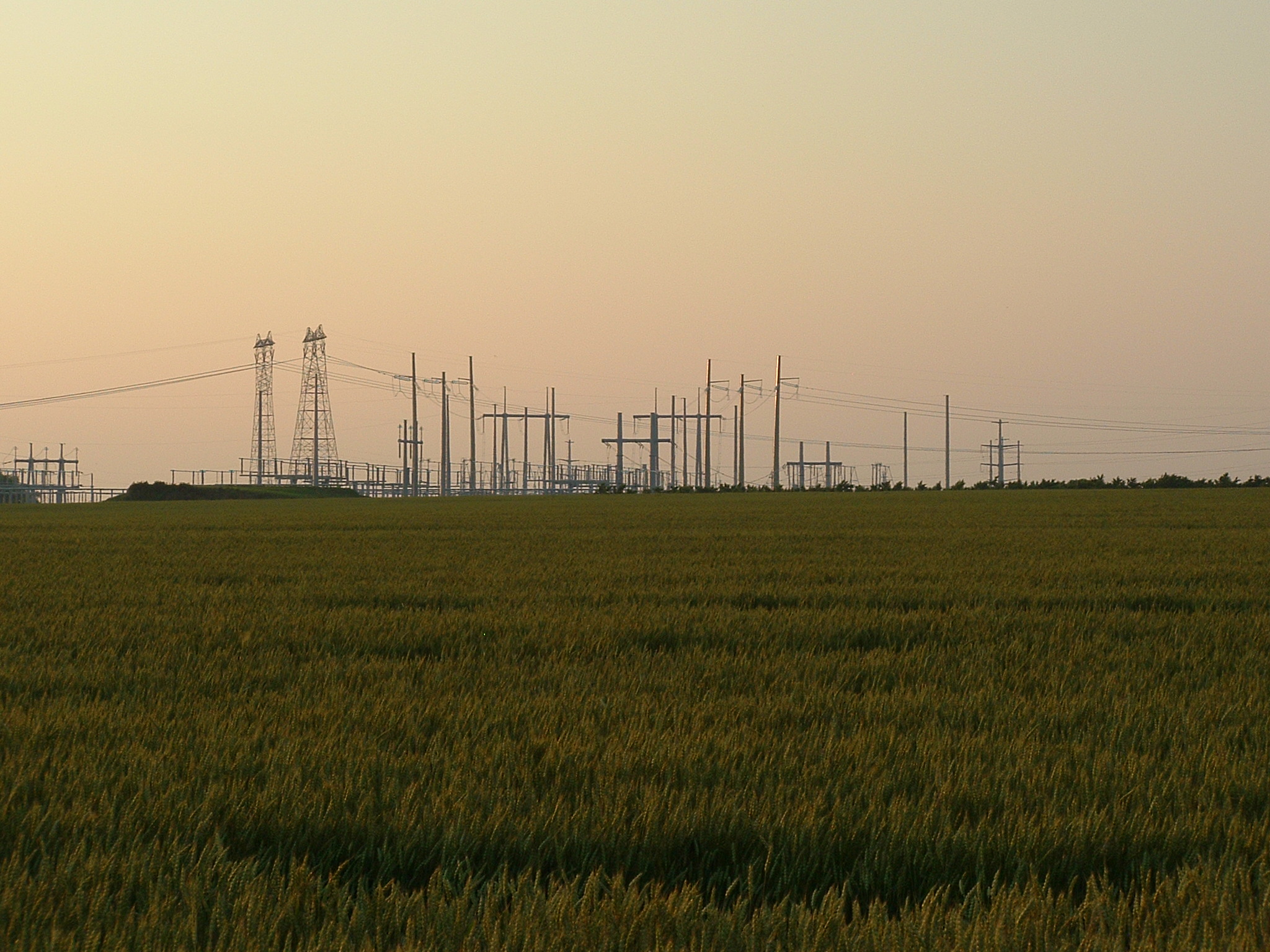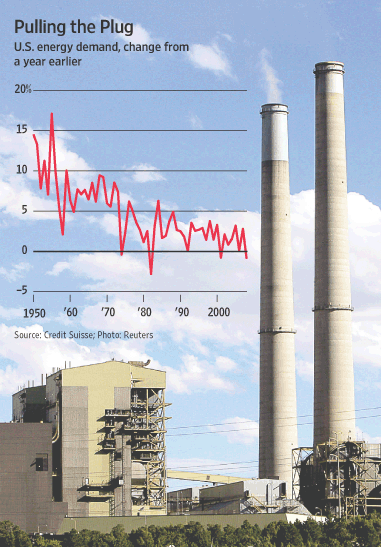UMTDI – “Survey” looking for …
August 28th, 2009
I think it’s one of those things where they’re working toward a pre-ordained result.
Here’s the “Survey” and “Legal Analysis: that arrived a couple weeks ago:
“Legal Analysis” my ass… how lame… do they think we’re that stupid?
Note the date, it’s the same date that this great 7th Circuit decision came out on cost allocation:
And then there’s all that cost allocation “problem” with Otter Tail Power and WOW/AWEA:
AWEA and WOW’s FERC filing to protest MISO cost allocation proposal
Methinks they doth protest too much… again… what they’re doing is so transparent, conflating collection, transmission, delivery, looking for a way to justify treatment as the same…
I DON’T THINK SO!
Bill Gates & Otter Tail at the PUC Tuesday…
August 24th, 2009
Yeah, he’s got pie on his face, all right… or is it egg…
Alan would put the headline as “PUC HELPS BILL GATES BUILD COAL PLANTS!”
Anyway, the meeting is Tuesday, TOMORROW… and, well, not Bill Gates directly, but his Cascade Investments. They’re on the PUC agenda tomorrow. Cascade Investments is providing the $$$ to Otter Tail Power build the Big Stone II coal plant, and without Cascade Investments, the Big Stone II coal plant doesn’t get built.
Here’s the Comment that I just sent in:
Otter Tail Power and Cascade Investments are on the agenda at the PUC, item #5, where they’re asking for approval of a “Standstill Agreement” that would allow them to operate in a way prohibited by state law:
Cascade Investments (Bill Gates) is a major investor in Otter Tail Power. You’d think he’d get that building coal plants is not a good investment these days, but nooooooo, there he goes! Over 10% of Otter Tail Power and wanting more, apparently! But wait, Minnesota law limits how investors with over 10% interest and corporations can act:
And here’s where it gets interesting. OES Staff asked what they’re contemplating that would not be possible under Minn. Stat. 302A.673, and they say “business loans.” But as staff noted, business loans are fine, that’s not an issue, it’s more stock that is an issue! Yet despite this non-responsive response, Staff recommends the PUC approve OTP’s and Cascade’s agreement. SAY WHAT??
So tell me, why should OTP get special treatment? This was an issue that the OES Staff noted was not common, had not even been reviewed before!!!
1)NOTICE SUCKED – look at the service list for OTP’s filing, and PUC Notice
2) OTP is asking for special treatment
3) OES asked questions about why and OTP did not answer them satisfactorily
4)What’s the impact on ratepayers? On shareholders? (not that PUC can, or should, have any concern about that!)
5) OTP has burden
6) OTP hasn’t met it
7) Petition should be denied
Makes sense to me…
WOW’s deal with the devil at issue
August 18th, 2009
“Wind on the Wires” and AWEA are whining and crying in the press about unfair treatment to wind generators. They do a deal with the devil to promote transmission and now are getting screwed — sorry, I won’t be hosting a pity party here!
AWEA and WOW’s FERC filing to protest MISO cost allocation proposal
To look at the full FERC docket, GO HERE TO FERC SEARCH PAGE, and search for docket ER09-1431.
“Wind on the Wires” is a subset of the Izaak Walton League – Midwest, not a separate organization. Some background here:
Years ago, the Midwest Izaak Walton League, together with MCEA, ME3 (Fresh Energy) and North American Water Office, did a deal with Xcel, and a massive “Wind on the Wires” grant was announced a couple of days later. The deal was to support a massive transmission buildout, specifically, to work to change state and federal law; to support transmission projects; to usher them through the legislature, state and federal administrative venues, to support at industry transmission planning groups; to support changes in rate recovery; to support changes in transmission need and siting criteria; and to allow transmission-only companies, all the things that Xcel wanted to roll out CapX 2020, JCSP, and whatever else is in their dreams.
Really… it’s all here:
$8.1 Million Wind on Wires grant from McKnight/Energy Foundation
This 2003 Settlement Agreement was in the Minnesota PUC’s TRANSLink docket, where Xcel wanted a transmission only company, not yet allowed in Minnesota. For the docket, go to www.puc.state.mn.us and then click on “eDockets” and search for docket 02-2152. F”or the resulting legislation, some of it, see 2005 Transmission Omnibus Bill from Hell.
So they jump through all those hoops and where are they? What happens?
Back to Cost Allocation of Transmission.
Let’s see… there was one cost allocation scheme, 50-50 split between owner utilities and generators connecting. Otter Tail Power objected and so the utilities changed it to a 90-10 split, and now “Wind on the Wires” and AWEA are screaming, whining and crying saying it has to go back. This has to do with how the utilities characterize the purpose of the line, be it for “Reliability” or “Generation Interconnection” and how costs are apportioned are different. In the CapX proceeding, the “Brookings line” was not declared, and the Fargo and LaCrosse lines were deemed “Reliability” but that’s absurd…
For “Baseline Reliability” projects here’s the cost allocation scheme:
For “Generation Interconnection” here’s the cost allocation scheme:
Ummmmm… a little more background here now that we’re talking about interconnection… does anyone remember the name of that coal plant that Otter Tail Power just got permitted to build? Oh, yeah, right, it’s BIG STONE II. And what was the name of that big honkin’ coal plant that “suddenly decided” to produce electricity rather than syngas? South Heart, yeah, that’s it. See “South Heart coal gasification — Coal on the Wires.” Both plants strategically placed to use CapX 2020 transmission. So what is the impact of this shift to Otter Tail Power and their Big Stone II project?
Here’s the Big Stone electrical link to CapX — it’s all connected:
Here’s new connector ND transmission announced April 3 — it’s all connected:
And of course, the big picture of CapX 2020 – click on it for a bigger picture to really appreciate those lines starting in the Dakotas:
Here’s an article from last week about their objections:
Wind industry protesting plan to pay for new lines
Cost-sharing proposal decried as threat to renewable energy goals
By Leslie Brooks Suzukamo
lsuzukamo@pioneerpress.com
Updated: 08/14/2009 12:01:26 PM CDT
So if “Wind on the Wires” and AWEA object to “generator pays” transmission, where it’s the generator causing the need, then they’re now in essence advocating for a different scheme for Big Stone II and South Heart coal plants too. Oh, good idea…
Here’s another one that turned up — WOW and AWEA sent out a raft of press releasees…
Wind Industry Fights Midwest Transmission Proposal to Stay Alive
by Stacy Feldman – Aug 17th, 2009
Even worse — the plan could put the nation’s renewable energy goals in jeopardy.
Currently, generators and utilities split the price paid, 50-50.
And then there’s the big issue of cost: Who would pay for it?
The MISO proposal is a local version of that long-simmering cost dispute.
FERC has not indicated whether it favors MISO’s proposal or would recommend changes.
Big win for Stop the Poles!
August 17th, 2009
Today a big win for Stop the Poles! The New Jersey Dept. of Transportation said a big resounding “NO!” to Atlantic City Electric’s request to use DOT Right-of-Way to stick it to the community!
Atlantic City Electric is part of PEPCO Holdings Inc, a big electric conglomerate in the Mid-Atlantic. They (the big boys, not ACE, I’m sure) decided they wanted to build a 230kV loop around the area to reinforce the system, in expectation of massive power transfers up from Salem, right ACE?
So they just up and decided to build it. Above are the transmission lines built on Bridgeton Road, one of those “elevator” construction jobs, where there’s no poles, and one day, someone “pushes the button” and there they are in all their ugliness. No notice, no consultation, no fanfare, no nothing,one day they saw them being pounded into the ground, going over fields, roads, right across Bridgeton Road from homes that are up against the road on the other side, so close it’s disgusting and downright dangerous … there’s zero clear zone from the road, EMF right there and nowhere to go … and then there’s the substation.
The substation is lit up like an inter-gallactic space station and hums so loudly that the neighbors are losing sleep. It’s been a community point of contention with Atlantic City Electric ever since they appeared.
And Atlantic City Electric wanted to double the mess by doing the same thing along Highway 77. Highway 77 already has some smaller wood poles, and along Bridgeton Road and along Highway 77, cars are regularly careening off the road and there’s wreck after wreck there. Newer and bigger poles is not a good idea.
So the DOT told ACE where NOT to stick their poles! Looks like it’s time for the Atlantic City Electric folks to head back to PEPCO for a little training in application procedures and public relations! Not that PEPCO knows…
PJM demand down… AGAIN
August 17th, 2009
From WSJ article below, the chart says it all…
Another great Wall Street Journal article came out, again noting that demand is DOWN, DOWN, DOWN. This is pretty important given the massive infrastructure rush by the utilities. It’s showing what we’ve known all along, the 800 lb. gorilla in the corner that could/should stop any new infrastructure buildout.
Rebecca Smith, Wall Street Journal, wrote this piece, published last week:
Here’s the PJM Report it’s based on:
There are some choice snippets in the WSJ article, such as:
On Friday, the nation’s largest wholesale power market serving parts of
13 states east of the Rockies is expected to report that electricity
demand fell 4.4% in the first half of the year. That helped to push
down spot market prices by 40% during the first half of this year.
… and…
The price declines in this market, which extends from Delaware to
Michigan, come on top of a 2.7% drop in energy use in 2008 over 2007.
… and…
Power demand in Texas is down 3.2% so far this year due to business
contraction and reductions in employment which are causing many
households to economize.
… and …
But the flagging economy has resulted in a slump in demand that has jolted some energy markets. American Electric Power Co. and Southern Co., for example, both reported double-digit drops in industrial electricity use for the past quarter.
… and…
“There’s more supply than demand and prices are really low so it
doesn’t make sense to build anything,” says John Shelk, president of
the Electric Power Supply Association in Washington, D.C., a group that
represents power generators.
Once more with feeling… SUSQUEHANNA-ROSELAND TRANSMISSION IS NOT NEEDED!




